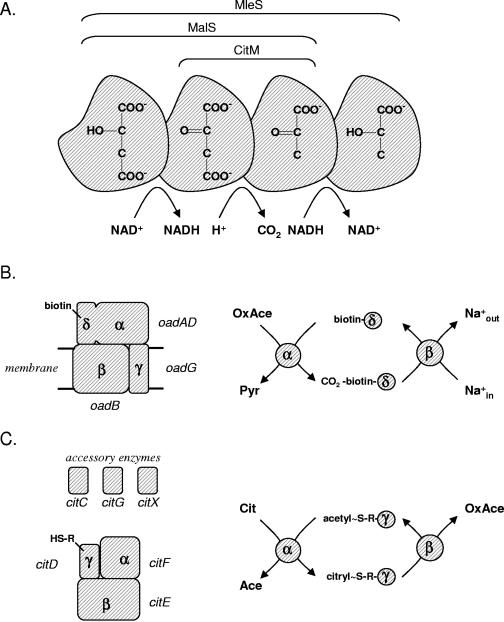FIG. 3.
Mechanism of enzymes involved in citrate and malate metabolic pathways. (A) Malic enzymes. Malic enzyme homologs catalyze the conversion of malate to oxaloacetate, oxaloacetate to pyruvate, and pyruvate to lactate, while the substrate remains bound to the enzyme. Different types of malic enzymes (MleS, MalS, and CitM) catalyze different parts of the sequence as indicated at the top. (B) Oxaloacetate decarboxylase. Left, the OAD complex of K. pneumoniae, showing the domain, subunit composition, and the names of the corresponding structural genes. Right, mechanism of catalysis. The α domain on the αδ subunit transfers the carboxyl group of oxaloacetate to the biotin group attached to the δ domain, after which the decarboxylation of the carboxy-biotin group is coupled to the pumping of Na+ ions across the membrane. (C) Citrate lyase. Left, composition of the CL complex and the accessory enzymes necessary for the incorporation and activation of the modified CoA prosthetic group R-SH (2′-(5"-phosphoribosyl)-3′-dephospho-CoA) on the gamma subunit. The corresponding structural genes are indicated as well. Right, mechanism of catalysis. The gamma subunit is an intermediate acyl carrier protein that cycles between the citryl- and acetyl-loaded state during turnover. Abbreviations: Cit, citrate; OxAce, oxaloacetate; Ace, acetate; Pyr, pyruvate.

